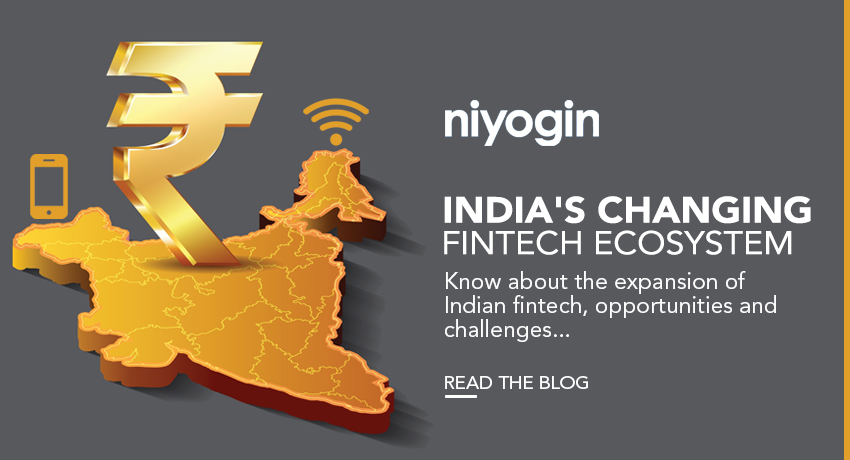In recent years, India’s fintech ecosystem has undergone a spectacular transition, revolutionizing how financial services are accessed and delivered. The convergence of technology, shifting customer tastes, and supportive legislative actions have resulted in a dynamic and diverse fintech ecosystem. From payments and loans to wealth management and insurance, the industry’s rapid expansion has not only boosted financial inclusion but also paved the way for creative solutions catering to a wide range of customers. The emergence of fintech in India can be attributed to a number of elements coming together. One of the key motivators has been the phenomenal growth of smartphones and internet connectivity, particularly in rural areas. This digital flow has produced a massive client base with access to digital financial services. Digital payments and Remittances With the launch of the Unified Payments Interface (UPI), India’s digital payments market has undergone a seismic upheaval. UPI has streamlined peer-to-peer transactions, allowing for quick and smooth money transfers. This innovation has not only reduced reliance on cash but has also accelerated the adoption of digital wallets and mobile banking apps. Furthermore, the government’s demonetization campaign in 2016 served as a spark, encouraging more individuals and companies to accept digital payments. Online Lending India’s ancient banking system frequently denied formal credit to a large segment of the population. Fintech platforms filled this void with novel loan strategies. These platforms analyze creditworthiness and distribute loans quickly by leveraging alternative data sources and smart analytics, making lending available to both individuals and small businesses. Investment and Wealth Management Fintech has democratized wealth management by giving consumers platforms to invest in stocks, mutual funds, and other financial instruments. Robo-advisors have gained popularity by providing algorithm-driven investing recommendations suited to individual risk profiles. This trend has made it easier and less expensive for regular investors to participate in the capital markets. Insurtech The insurance industry has also been transformed by fintech. Insurtech businesses use data analytics, artificial intelligence, and IoT devices to customize insurance policies, speed claim processing, and improve customer experience. This has made insurance products more accessible, inexpensive, and responsive to customer needs. Challenges and Opportunities Despite its rapid growth, the Indian fintech ecosystem faces certain challenges. Data security and privacy concerns, regulatory uncertainties, and the need for constant innovation are some of the hurdles that industry players must navigate. Additionally, ensuring financial literacy and digital literacy among the masses remains critical to harnessing the full potential of fintech. However, the possibilities are numerous. The government’s “Digital India” program and initiatives such as the “Jan Dhan Yojana” have paved the way for a financially egalitarian digital environment. Collaborations between established financial institutions and fintech firms can help deliver more comprehensive and efficient services by using each other’s capabilities. Regulatory Outlook India’s regulatory organizations have taken an aggressive stance towards fintech. The Reserve Bank of India (RBI) has implemented policies to encourage innovation while maintaining financial stability. The regulatory framework allows financial firms to test their ideas in a controlled environment, stimulating innovation while limiting risks. Furthermore, the RBI’s rules on digital KYC and data localization indicate the authorities’ commitment to balancing innovation and security. India’s fintech sector has grown from a niche market to a significant force altering the country’s financial environment. The convergence of technology, creativity, and regulatory support has enabled fintech to overcome gaps, increase financial inclusion, and improve the efficiency of financial services. As the ecosystem matures, collaboration, innovation, and regulatory vigilance will be the cornerstones of its continuous growth, ultimately leading to a more inclusive and digitized financial future for India.
Tag: insurtech
Insurtech is set to dominate in 2023!
The dominance of Insurtech is expected to skyrocket by 2023. Insurtech is altering the environment in remarkable ways as traditional insurance operations meet the digital age. Streamlined claims processing, personalized policies using data analytics, and improved customer experiences are the new norm. From AI-powered underwriting to blockchain-based contracts, the convergence of technology and insurance is not only improving operations but also increasing client trust and engagement. The industry is primed for transformative growth as more firms invest in and implement Insurtech solutions, providing a glimpse into a more efficient, customer-centric, and digitally empowered future of insurance. Why is Insurtech gaining significance? The global Insurtech market was valued at $3.85 billion in 2021 and it is expected to double in the next ten years. Insurtech is gaining significance due to several key factors: Technological Advances: Technological advancements such as artificial intelligence, machine learning, the Internet of Things, and data analytics are being used to streamline and improve various aspects of the insurance industry, ranging from underwriting and claims processing to customer service. Changing Customer Expectations: As consumers become more digitally sophisticated, they seek greater convenience, transparency, and personalized experiences from insurance companies. Insurtech firms can match these changing client expectations by leveraging technology. Cost-effectiveness: When compared to traditional insurance businesses, insurtech startups are frequently able to operate with lower overhead expenses. This enables them to provide more competitive pricing and more innovative products. Data Utilization: The availability of enormous amounts of data from diverse sources enables insurtech companies to construct more accurate risk assessment models, resulting in improved pricing and coverage customization. Improved Customer Engagement: Insurtech companies can communicate with clients in real-time via mobile apps, online platforms, and chatbots, providing rapid quotations, policy administration, and claim processing, thereby increasing customer satisfaction. Product Development: Insurtech companies offer new forms of insurance products, such as usage-based insurance (UBI), peer-to-peer insurance, and micro-insurance, that are tailored to unique customer needs and lifestyles. Partnerships and Collaborations: Traditional insurance companies recognize the potential of insurtech and begin teaming with or investing in insurtech startups to boost their technological skills and remain competitive. Regulatory advances: Regulatory organizations are also changing to suit technological advances in the insurance sector, making it simpler for insurtech companies to operate and innovate. The growing importance of Insurtech can be linked to a convergence of technical breakthroughs, evolving client expectations, and industry demands. Insurtech is transforming the traditional insurance environment by offering innovative technologies that expedite procedures, improve consumer experiences, and increase risk assessment. Adopting artificial intelligence, machine learning, data analytics, and blockchain technology has enabled the development of more personalized insurance packages, fast claims processing, and fraud detection. Collaboration between established insurers and Insurtech firms is also developing an innovative environment. Established insurers are collaborating with technology-driven startups to use their knowledge and accelerate digital transformation. This collaboration allows both sides to enter new markets, provide superior services, and remain competitive in an ever-changing world.

